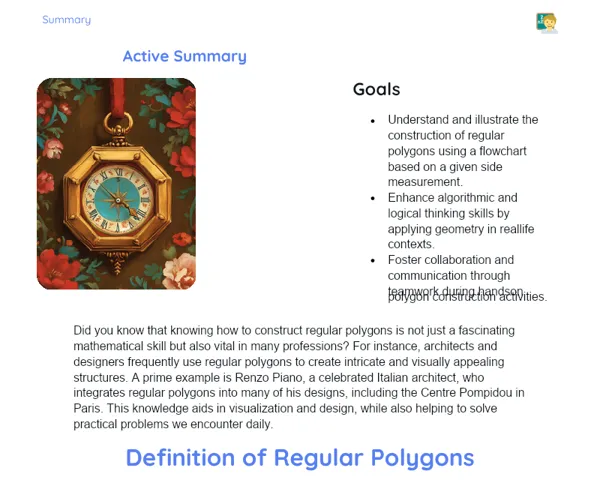Socioemotional Summary Conclusion
Goals
1. Grasp the idea of proportionality and its everyday applications.
2. Tackle math problems that involve the proportionality between quantities.
3. Recognise when two or more quantities are in proportion.
4. Hone socio-emotional skills like self-awareness, self-control, and making responsible decisions.
Contextualization
Did you know that we often use the concept of proportionality in our day-to-day lives without even realising it? 🧠⚖️ Whether it’s adjusting the quantity of masalas in a recipe or planning the amount of petrol for a journey, proportionality finds its way into our daily choices. Mastering this concept not only makes math a lot simpler but also helps us make balanced and well-informed decisions. Chalo, let’s see how math and our socio-emotional skills go hand in hand to make our lives smoother and more mindful! 🚀🎯
Exercising Your Knowledge
Definition of Proportion
A proportion refers to the relationship between two quantities that results in a constant ratio. For instance, if a recipe requires 2 cups of flour for every 1 cup of sugar, the proportion is 2:1. This idea helps us maintain consistency, whether we’re scaling up a recipe or allocating resources in different scenarios.
-
A proportion is essentially a comparison of two quantities using a ratio.
-
Proportionality helps ensure balance in various daily situations.
-
A practical example is adjusting a recipe while keeping the ingredient ratios intact.
Proportional Quantities
Quantities are considered proportional when the ratio between them remains constant. This means, if one quantity increases, the other rises in the same proportion. Consider a car’s fuel consumption: if it uses 10 litres to travel 100 km, it would use 20 litres to cover 200 km, consistently following that ratio.
-
Proportional quantities maintain a steady ratio.
-
Direct proportionality means an increase in one quantity results in a proportional increase in the other.
-
A practical example is the fuel consumption proportional to the distance travelled.
Simple Rule of Three
The simple rule of three is a straightforward method to solve problems involving proportionality. It helps us determine an unknown value in a proportional relationship through a basic equation. For example, if 50 oranges cost Rs.100, using the rule of three we can easily figure out the cost for 30 oranges.
-
The simple rule of three is a useful technique for solving proportionality issues.
-
It involves calculating an unknown value from a proportional relationship using a simple equation.
-
A practical example is computing the cost of 30 oranges when you know the price of 50 oranges.
Key Terms
-
Proportion: A relationship between two quantities that results in a constant ratio.
-
Proportional Quantities: Quantities that maintain a fixed ratio between them.
-
Simple Rule of Three: A method for discovering an unknown value in a proportional relationship using a basic equation.
-
Direct Proportionality: When an increase in one quantity leads to a proportional increase in the other.
-
Inverse Proportionality: When an increase in one quantity causes a proportional decrease in the other.
For Reflection
-
How can understanding proportionality help in making more informed decisions in everyday life? Share some examples.
-
What emotions did you experience while solving proportion problems in class? How did you manage those feelings?
-
In what ways do math and socio-emotional skills support each other to foster better problem-solving and decision-making?
Important Conclusions
-
Proportionality is a mathematical concept that establishes a constant ratio between two quantities.
-
We utilise proportionality in various common situations, like tweaking recipes or calculating fuel needs.
-
A good understanding of proportionality allows us to solve math problems more efficiently and make balanced decisions.
-
Developing socio-emotional skills such as self-awareness and self-control is key to overcoming mathematical challenges.
Impacts on Society
In our everyday life, proportionality plays a pivotal role. Whether you're calculating discounts while shopping or ensuring your favourite recipe turns out perfectly, knowing this mathematical concept helps you perform tasks accurately and efficiently. For example, when you adjust a recipe to serve more or fewer people, you depend on proportionality to keep the ingredients in the right balance.
On the emotional front, recognising and managing proportionality problems can boost your confidence and reduce anxiety in real-life situations. Using simple tools like the rule of three gives you a sense of control and competence, a quality that reflects in other decision-making areas as well.
Dealing with Emotions
To practise the RULER method at home, take a proportion problem you encountered recently and write about how you felt while solving it. Start by recognising the emotion you experienced – be it anxiety, frustration, or satisfaction – and then understand what triggered it. Clearly name the emotion, express how you felt in writing, and finally, reflect on how you managed or regulated that emotion. This exercise will help you gain clearer insights into your feelings and develop practical strategies to handle them better.
Study Tips
-
Solve proportion problems in everyday contexts, such as adjusting recipes or managing household expenses, to reinforce your understanding.
-
Form study groups with friends to work on problems together and discuss the emotions associated with tackling them. Teamwork often makes learning more enjoyable!
-
Leverage educational apps and games that incorporate proportional reasoning to make learning interactive and fun.



